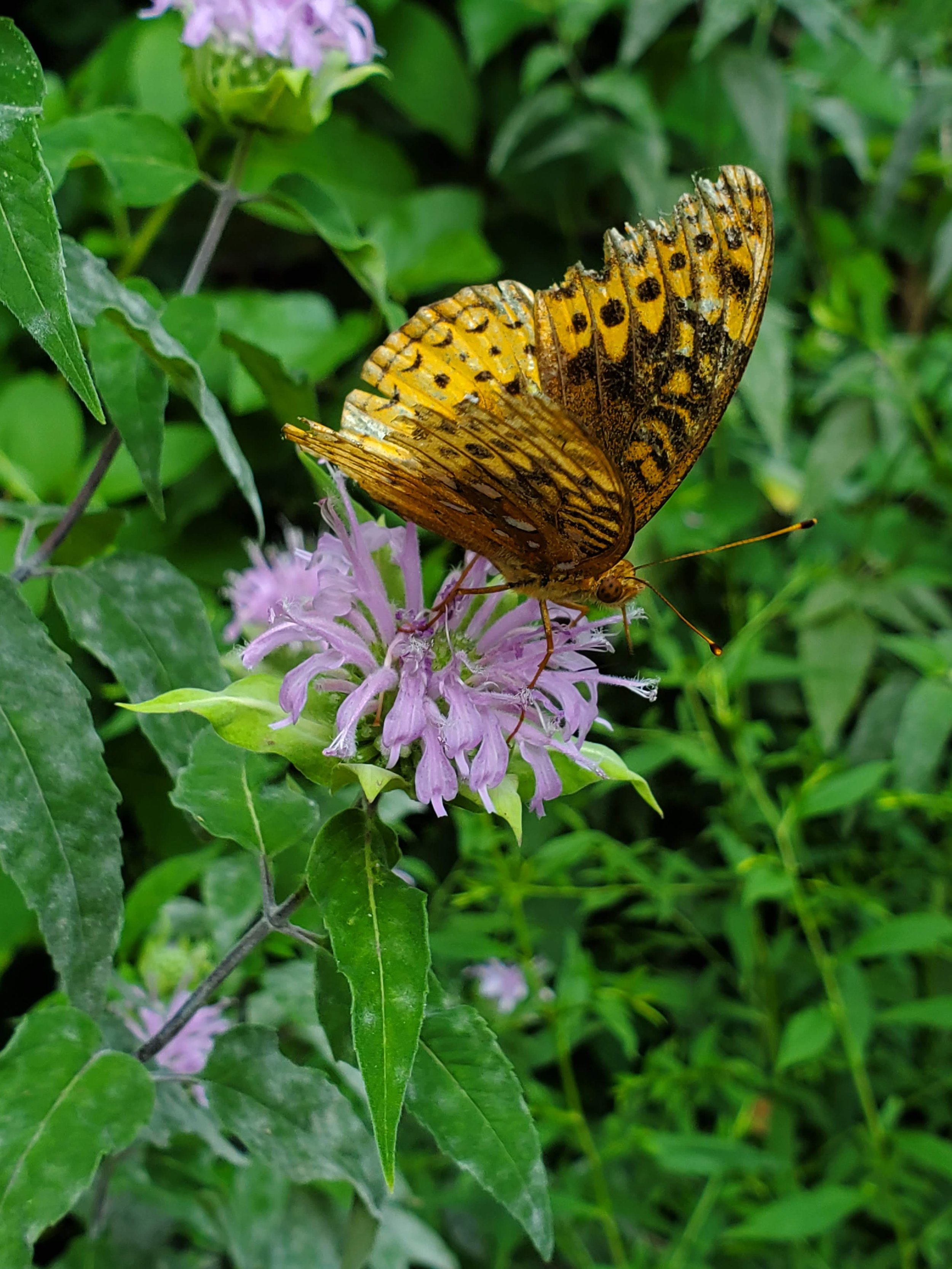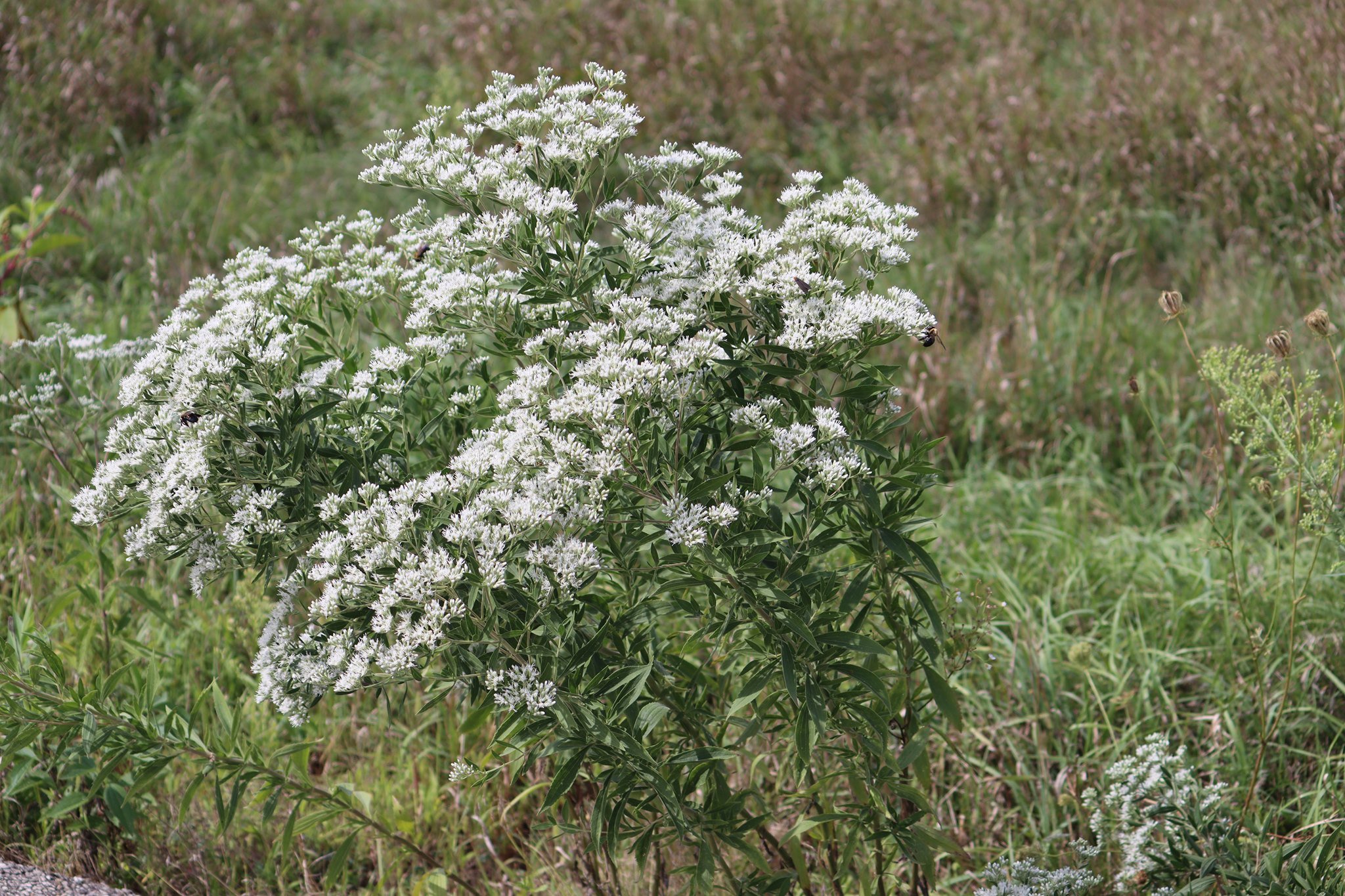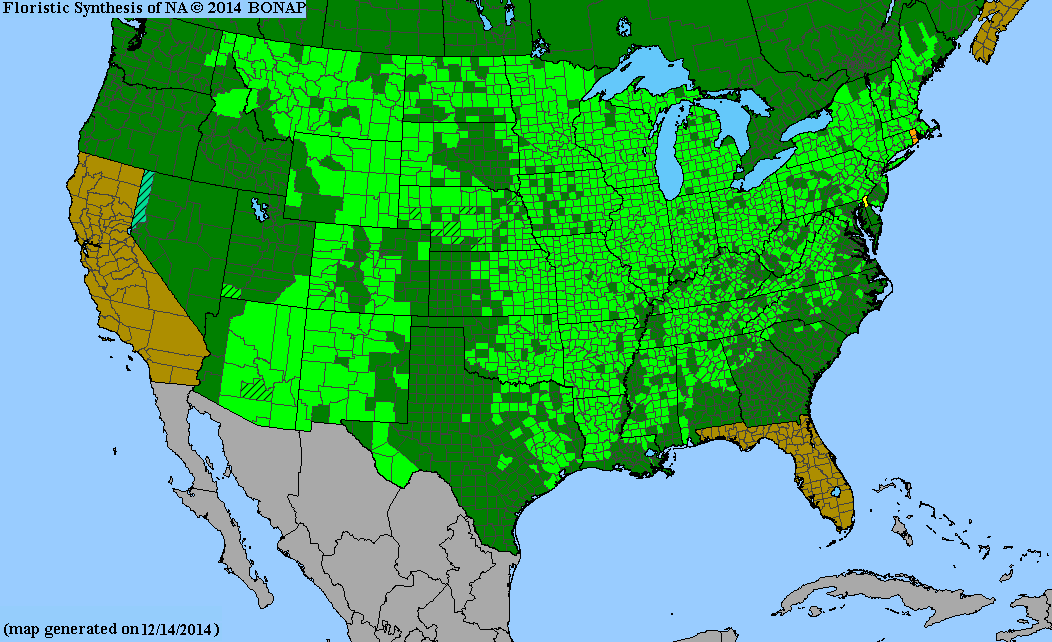Wild Bergamot (Bottom Center) with Purple Coneflower, Grey Headed Coneflower, Canada Goldenrod, and Blackberry in a Native Meadow
Wild Bergamot (Monarda fistulosa) is a perennial herbaceous plant in the mint family, and if the leaves are rubbed it exudes a pleasant fragrance. The plant is edible and the flavor is somewhat similar to oregano, used as a spice in native plant agriculture. Other Indigenous People’s traditional uses include making tea from the leaves to treat viruses and various symptoms. The tea also has a slight sedative - calming effect on the mind.
Wild Bergamot is a hardy plant that spreads short distances by rhizomes (underground stems) and can quickly spread in loamy or rich soil. As they spread, they form circular shaped clumps. This plant prefers moderate moisture soils, but can handle saturated soils as well. It’s shade tolerance is moderate, capable of growing in canopy openings within floodplain forests. If your soil is exceptionally dry, just apply 1.5 inches of water per 14 days during droughts to maintain the healthiest representation of Wild Bergamot.
A Two Spotted Bumble Bee (Left) sharing a Wild Bergamot Bloom with an Eastern Carpenter Bee (Right)
This plant is a pollinator powerhouse attracting bumblebees, miner bees, cuckoo bees, and large leaf-cutting bees, bee flies, butterflies, skippers, and hummingbird moths (see below). The seeds are eaten by Goldfinches as they mature in late summer.
Click Images Below to Expand them.
Pictured above Top Right - Hummingbird Clearwing Moth, Bottom Left Great Spangled Fritillary, Bottom Right - Two Spotted Longhorn Bee
Select/click the images above to expand them then click/tap to advance to the next picture. Also, Turn your cellphone side ways for horizontal pictures, and straight up and down for vertical pictures.
In Native Meadows or Native Prairies - Wild Bergamot forms an aesthetic firework show when combined with Purple Coneflower, Slender Mountain Mint, Royal Catchfly, and Grey Headed Coneflower or Early Sunflower. Be aware that these plants look spectacular during the mid summer but as the season wears on they physically degrade as they go into early dormancy especially if summer drought persists. Give them mid to late summer waterings to help them retain better aesthetic quality - in garden situations. In Meadow conditions they will blend in with the other vegetation and aesthetic decline won’t be much of an issue.
Wild Bergamot is often bound to get Powdery Mildew. There’s not much you can do about it without using potentially insect - toxic fungicides on the leaves. The condition is reduced when Wild Bergamot is given an abundance of sunlight. Powdery Mildew typically doesn’t significantly harm the plant, it just degrades the aesthetic of the leaves.
COMPANION Plants of Wild Bergamot
Click Images Below to Expand them.
Select/click the images above to expand them then click/tap to advance to the next picture. Also, Turn your cellphone side ways for horizontal pictures, and straight up and down for vertical pictures.
Pollinator Garden Positioning of Companion Plants
The following paragraph will help you position the above pictured companion plants with Wild Bergamot in Pollinator Gardens. In front should translate to being planted on the Southeast, South, or Southwest side of Wild Bergamot. Behind translates to being planted on the Northeast, North, Northwest side of Wild Bergamot. And beside is self-explanatory - East or West side of Wild Bergamot.
Royal Catchfly - Beside or in front. Grey Headed Coneflower - Beside. Blue Wild Indigo and White Wild Indigo in front. Common Milkweed - Beside or Behind. Echinacea - in front. Early Sunflower - Beside or Behind. Yellow Crownbeard - in front. Culver’s Root -Beside. Wild Senna - Behind or Beside. Tall Boneset Beside or in front. Common Sneezeweed - in front. Ironweed - Behind. Tall Coreopsis - Behind. New England Aster - in front or Beside. Showy Goldenrod - in front.
We highly recommend Wild Bergamot for Native Meadows and Pollinator Gardens. A little goes a long way aesthetically, for example in a 14’ x 6’ bed just 5 individual plants will create a great display.
Germination Tips for Plugs: Cold moist Stratify for 30 - 40 days then surface sow - compress into surface of medium/soil when sowing.
Receive 40% off of our Native Plant Propagation Guide/Nursery Model book when purchased as a package. deal with either our Native Meadowscaping book or our Native Plant Agriculture book at this link.
Learn about what our Native Meadowscaping book has to offer here at this link.
Learn about what our Native Plant Agriculture Vol. 1 book has to offer here at this link.
Learn about what our Native Plant Propagation Guide & Nursery Model has to offer here at this link.























